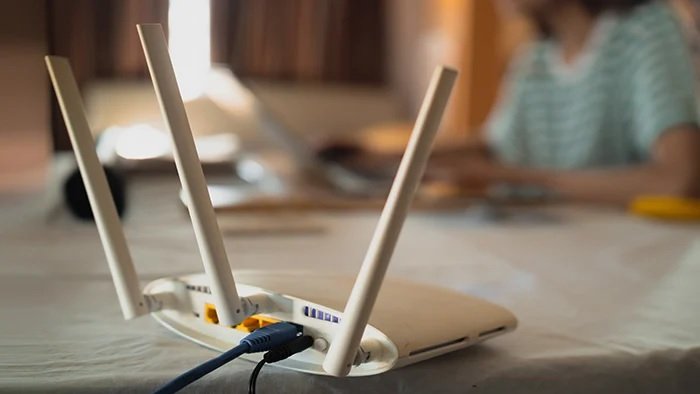WiFi is something we use every day, whether we realize it or not. It’s how our phones, laptops, smart TVs, and even home appliances connect to the internet. Over 90% of U.S. households use WiFi for internet access. But what exactly is WiFi, and how does it work?
WiFi is short for wireless networking. It allows your devices to connect to the internet without using physical cables. This wireless connection gives you the freedom to move around while staying connected, whether you’re streaming a movie, checking emails, or browsing social media.
In today’s world, WiFi is essential. According to a report by Statista, there were over 22 billion connected devices in 2023, many of which rely on WiFi. From homes to public places like cafes and airports, a stable WiFi connection has become a basic need for daily tasks.
What Does WiFi Stand For?
Many people believe WiFi stands for “Wireless Fidelity,” but that’s actually a myth. The term “WiFi” doesn’t stand for anything specific. It was a marketing name created to be more consumer-friendly than the technical term IEEE 802.11, which is the standard used for wireless local area networks (WLANs).
So, while it sounds like “Hi-Fi” (high fidelity), WiFi itself doesn’t have a full form. It simply refers to the wireless technology that allows devices to communicate without cables.
How WiFi Works
Radio waves are used by WiFi to send info from your device to a router. To put it simply, this is how it works:
When you open a page on your phone, radio waves send a request from your phone to the router. A modem talks to your Internet Service Provider (ISP) and is linked to the router. After going through the same path, the data comes back and shows you the page.
The router acts as a go-between for your gadget and the internet. It changes web info into signals that your device can understand and the other way around.
What You Need to Use WiFi
You need a few simple things to connect to WiFi:
You need a plan from an ISP like PLDT, Globe, or Converge to connect to the internet. This is how the internet gets to your house: through a cable or fiber line from the ISP.
A modem and a WiFi router are what you need. Some gadgets do both at the same time. The modem connects to the internet, and the router sends it to your devices wirelessly.
Your device must be able to connect to WiFi. This includes phones, laptops, tablets, smart TVs, and even new products like robot vacuums and smart fridges.
Types of WiFi Connections
For WiFi, the two main bands are 2.4 GHz and 5 GHz. The 2.4 GHz band can reach more places, but it moves more slowly. The 5 GHz band can go faster but has a shorter range. Both can be used with some later routers, so devices can switch between them as needed.
The newest ones are WiFi 6 and WiFi 7. WiFi 6 is faster, works with more devices, and is less likely to lag. Even faster speeds (up to 30 Gbps) and better performance in places with a lot of people are promised by WiFi 7, which just came out. Getting these new versions can help if you stream in 4K, play games online, or use a lot of smart hardware.
Common Uses of WiFi
WiFi is used by almost everyone. Kids and adults can use it to watch TV, work from home, or connect smart home devices like lights and security systems.
People can stay connected while they’re out and about thanks to free WiFi in public places like airports, coffee shops, and malls. Remember that public Wi-Fi may not be as safe.
Voice assistants, thermostats, and door cams are just a few of the smart devices that need WiFi to work. Smart home systems are becoming more popular, which means that more people need WiFi that works well.
WiFi vs. Mobile Data
Mobile data links to the internet through your cell phone network, while WiFi connects through a local network. Most of the time, WiFi is faster and won’t use up your phone’s data plan. It’s great for watching movies, making video calls, and downloading big files.
Mobile internet is helpful when you’re not connected to WiFi or when you’re outside. It gives you more choices, but based on your plan, it might cost a lot.
When you can, use WiFi to save data and get things done faster. Use your phone’s data when you’re out and about or in places without WiFi.
Is WiFi Safe?
WiFi can be safe if you follow these steps. At home, you should always use a strong password and secure your router with something like WPA3. Keep your router’s software up to date and don’t let people you don’t know use your network.
It’s risky to use public WiFi. Hackers can make fake networks or keep an eye on links that aren’t safe. On public WiFi, don’t type in private things like passwords or bank account numbers. A VPN is what you need to get to secret items.
Final Thoughts
All of our digital lives are linked by WiFi, which we can’t see. It helps us learn, work, play, and stay in touch with other people.
You can make your life better and fix problems faster if you know how WiFi works, what you need, and how to use it safely.
As tech gets better, WiFi will get faster and more useful. It makes a big difference whether you’re setting up your first network or updating to WiFi 7.
It’s simple and helpful to use WiFi. Now you know more about how to set up your home, use your tech, and connect to the internet.
Refresh Date: August 22, 2025




